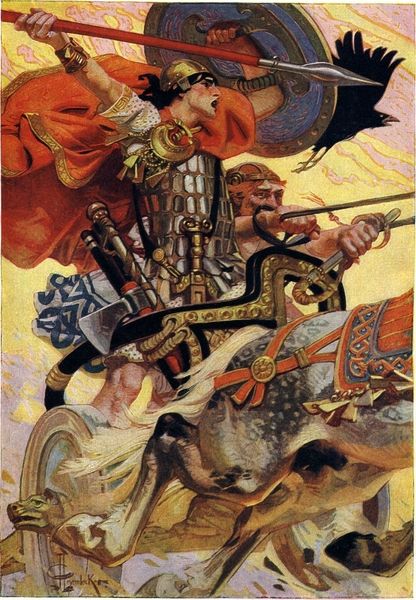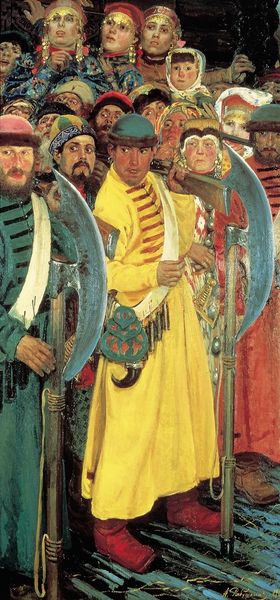
Dimensions: 56 x 31 cm
Copyright: Public domain
Editor: This is Ilya Repin’s "Zaporizhian Colonel" from 1880, an oil painting currently held at the Sumy Museum of Fine Arts. I’m struck by how tangible the colonel’s clothing feels; you can almost touch the embroidery. How do you interpret this work? Curator: Considering this from a materialist perspective, I’m drawn to the very specific opulence of the Colonel's attire contrasted with the implied austerity of his surroundings. Think about the labour involved in creating those intricate embellishments, the social hierarchies it signifies, and then consider the function of the cannon itself, resting beside him. What narratives are embedded within those materials and their juxtapositions? Editor: I hadn’t considered that contrast so directly. The bright colours and fine details are quite captivating on their own, so I sort of glazed over the rest. Is there anything particularly symbolic in the choice of materials here? Curator: The fabrics and metals signify wealth and power. The cannon, of course, represents military might and the capacity for violence. But Repin, a realist painter, prompts us to examine the context. The Zaporozhian Cossacks were a semi-independent group, often at odds with the Russian Empire. Could the portrait, rendered with such tangible realism, suggest both power and a simmering resistance against established authority? Think of the raw materials needed for conflict versus for beauty. Editor: So the painting becomes a statement about the complex relationship between these local powers and the materials that define their existence? Curator: Exactly! Repin's realism allows the materiality to speak for itself, exposing social tensions through a seemingly straightforward portrait. Editor: That’s a perspective I hadn’t considered! It changes my whole reading of the painting. Thank you. Curator: My pleasure. Now, go look at other art and consider the story of its materiality!
Comments
No comments
Be the first to comment and join the conversation on the ultimate creative platform.













